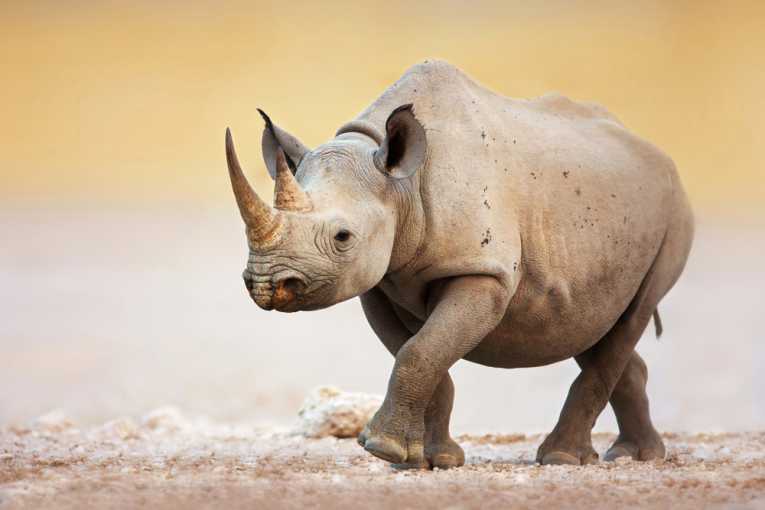More than a quarter of mammals are in danger of extinction, conservationists claim. Almost 62,000 species have been reviewed by the International Union for Conservation of Nature in the latest IUCN Red List of Threatened Species, which has been called the 'Barometer of Life'.
Jane Smart, Director of the IUCN Global Species Programme, says, "This update offers both good and bad news on the status of many species around the world.
"We have the knowledge that conservation works if executed in a timely manner, yet, without strong political will in combination with targeted efforts and resources, the wonders of nature and the services it provides can be lost forever."
Among the many mammals in danger are several species of rhinoceros. The Black Rhino and Western Black Rhino have already been officially declared Extinct and the White Rhino and Northern White Rhino are believed to be extinct outside captivity. The Javan Rhino is also Severely Endangered and dwindling numbers are confined to the Indonesian island of Java.
The IUCN says there is insufficient political will for rhino conversation and organised global criminal gangs and poachers are reducing numbers even more.
Chair of the IUCN Species Survival Commission, Simon Stuart, says, "Human beings are stewards of the earth and we are responsible for protecting the species that share our environment.
"In the case of both the Western Black Rhino and the Northern White Rhino the situation could have had very different results if the suggested conservation measures had been implemented. These measures must be strengthened now, specifically managing habitats in order to improve breeding performance, preventing other rhinos from fading into extinction."
There have been some notable victories in the conservation battle, such as the Southern White Rhino, which has grown from fewer than 100 in the late 1800s to more than 20,000 today. Przewalski's Horse has also recovered spectacularly thanks to a breeding scheme for animals in captivity. After being believed to be extinct in the wild just 15 years ago, numbers have now increased to more than 300.
The Red List also highlights that four out of ten of terrestrial reptiles on the island of Madagascar are threatened. Among those that are in serious danger are snakes, skinks, chameleons and geckos.
The information in the Red List will help focus biodiversity plans. In fact, extra conservation areas are being created in Madagascar that will help protect seriously endangered animals including the wonderfully-named Limbless Skink and the Bizarre-nosed Chameleon.
Thanks to being listed in the Red List, creatures at risk, including the geckos, Paroedura masobe and Uroplatus pietschmanni that have not previously received conservation aid, now have hope of extra protection.
Work is in progress to increase the number of plants, especially conifers, on the Red List. Among species in decline is the Chinese Water Fir, which is now Critically Endangered, largely because intensive agriculture in China has reduced its habitat and it is now almost extinct in the wild. The Himalayan yew, Taxus contorta, which produces the anti-cancer drug Taxol, has now been classified as Endangered after too much has been harvested for medicines and firewood.
Five out of eight species of tuna, Albacore, Atlantic Bluefin, Bigeye, Southern Bluefin and Yellowfin, are either 'Threatened' or 'Near Threatened'.
Among amphibians two species that have been hit by loss of habitat and collected as pets, the Summers' Poison Frog and Blessed Poison Frog, are now respectively listed as Endangered and Vulnerable.
Jean-Christophe Vie, Deputy Director of IUCN's Global Species Programme, says, "The IUCN Red List is critical as an indicator of the health of biodiversity, in identifying conservation needs and informing necessary changes in policy and legislation to drive conservation forward.
"The world is full of marvellous species that are rapidly moving towards becoming things of myth and legend if conservation efforts are not more successfully implemented - if we do not act now, future generations may not know what a Chinese Water Fir or a Bizarre-nosed Chameleon look like."










